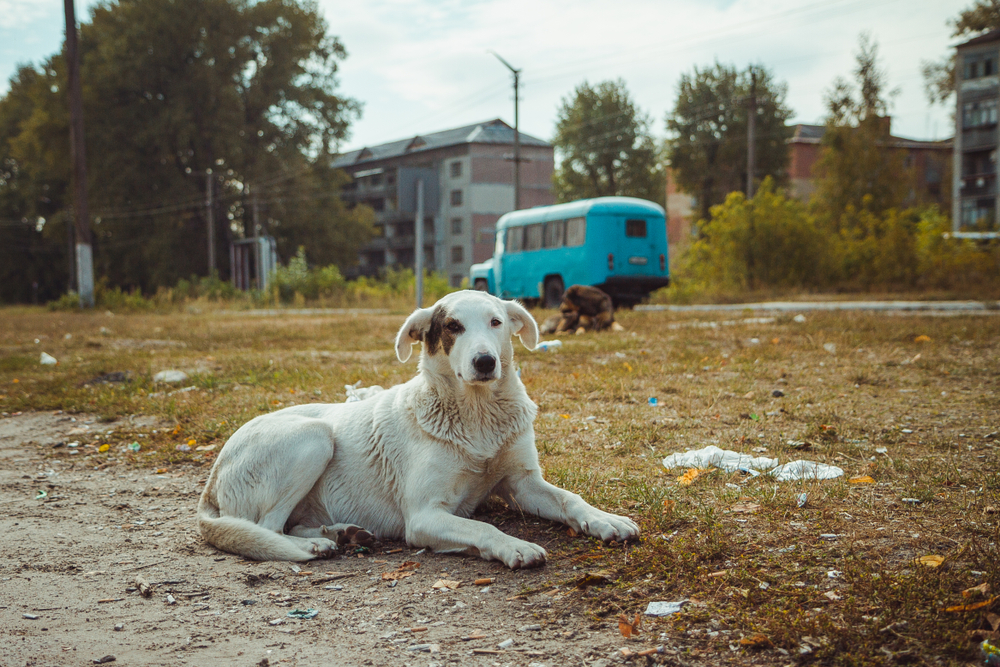WWW.DISCOVERMAGAZINE.COM
Chornobyl Dogs Have Genetic Differences but Not From Disaster Mutations
After studying the genomes in dogs living close to and around the Chornobyl disaster site, researchers from North Carolina State University and Columbia University Mailman School of Public Health concluded that radiation-induced mutation likely did not cause genetic differences in dog populations living in Chornobyl City and the nearby Chornobyl Nuclear Power Plant (NPP). With these findings in the new study published in PLOS ONE, the research team hopes to better understand how a nuclear disaster may impact populations over time.We have been working with two dog populations that, while separated by just 16 kilometers, or about 10 miles, are genetically distinct, said Matthew Breen, contributing author and Oscar J. Fletcher Distinguished Professor of Comparative Oncology Genetics at NC State, in a press release. We are trying to determine if low-level exposure over many years to environmental toxins such as radiation, lead, etc., could explain some of those differences.Examining Doggy DNAThe study examined the genomes of two groups of dogs living near the Chornobyl disaster site. The researchers found that these two groups showed a dramatic level of genetic differentiation, even though they lived in rather close proximity.In a previous study, the research team analyzed the genomes of over 300 dogs living in the Chornobyl site for genetic variants. They found 391 outlier regions areas of the genome that show variation compared to the rest of the genome in certain dogs. According to the study, the outlier regions contained genes typically associated with DNA repair.With this new study, the research team was trying to determine if these outliers were a result of mutations caused by the fallout of the Chornobyl disaster.Most people think of the Chornobyl nuclear accident as a radiological disaster in an abandoned corner of Ukraine, but the potential adverse health implications are much wider, said Norman Kleiman, senior co-author and professor of environmental health sciences at Columbia University School of Public Health, in a press release. This is due to the many other toxins including heavy metals, lead powder, pesticides, and asbestos released into the environment during the ensuing cleanup and remediation over three decades, said Kleiman.Read More: Have Chernobyl Mutations Rewired Evolution?Zooming In On MutationsThe research team determined that the dogs living in the Chornobyl City area shared similar genomes to dogs living in other outlying areas such as Russia and Poland. Because of this, the team used these dogs as the control group. From there, they began analyzing the two groups on a chromosomal level before going deeper and looking at them from a genome interval, and eventually looking for differences in single nucleotides.Researchers were searching for accumulated germline DNA mutations, or mutations that occur in reproductive cells as DNA is passed from parent to offspring.Think of it like using the zoom function on your phones camera to get more details we start with a wide view of a subject and then zoom in, said Breen in a press release. We know that, for example, exposure to high doses of radiation can introduce instability from the chromosomal level on down. While this dog population is 30 or more generations removed from the one present during the 1986 disaster, mutations would likely still be detectable if they conferred a survival advantage to those original dogs. But we didnt find any such evidence in these dogs, said Breen.Survival GenesAfter completing their analysis, the research team came to the conclusion that the Chornobyl dogs showed no signs of genetic mutation. However, its also possible that selective pressures environmental factors that influence reproduction may have played a part in the genetic variance of these two dog groups.In human terms, this would be like studying a population that is centuries removed from the one present at the time of the disaster, said Megan Dillon, PhD candidate at NC State and lead author of the study, in a press release. Its possible that the dogs that survived long enough to breed already had genetic traits that increased their ability to survive. So perhaps there was extreme selective pressure at the start, and then the dogs at the power plant just remained separate from the city population. Investigating that question is an important next step that we are now working on, said Dillon.The research team is using these findings to better understand how drastic changes to an environment, like a nuclear disaster, can impact the health of both humans and their animal companions over the course of time.As it is certain, given our increasingly technological and industrial societies, there will invariably be other such disasters in the future, and we need to understand the potential health risks and how best to protect people, Kleiman said in a press release.Article SourcesOur writers at Discovermagazine.com use peer-reviewed studies and high-quality sources for our articles, and our editors review for scientific accuracy and editorial standards. Review the sources used below for this article:A graduate of UW-Whitewater, Monica Cull wrote for several organizations, including one that focused on bees and the natural world, before coming to Discover Magazine. Her current work also appears on her travel blog and Common State Magazine. Her love of science came from watching PBS shows as a kid with her mom and spending too much time binging Doctor Who.
